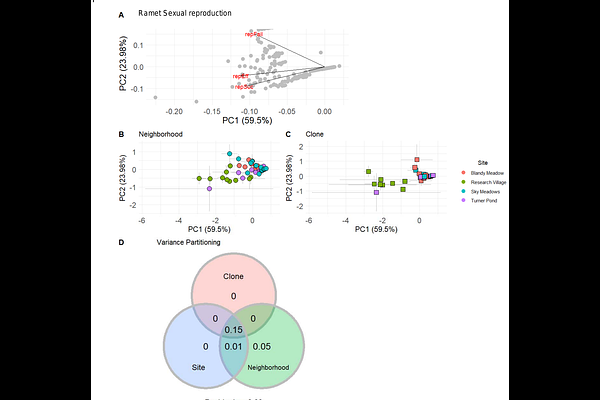A high degree of clonal reproduction and aggregated structure of milkweed clones does not affect ramet sexual reproduction

A high degree of clonal reproduction and aggregated structure of milkweed clones does not affect ramet sexual reproduction
Machiorlete, H.; Puzey, J.; Dalgleish, H. J.
AbstractClonal plants have unique population structures where genetic individuals can occupy many locations at once, but the effect of ramet spatial arrangement on demography is poorly understood. We analyzed the spatial, genetic, and demographic characteristics of 798 ramets from four populations of Asclepias syriaca, a highly clonal plant, in northern Virginia. Asclepias syriaca clones varied in size and spatial aggregation: ramets of the same genotype were more likely to be spatially clustered but when clones were small, we observed more spatial dispersion, potentially to avoid competition with self. Despite low genetic variation over all (Genotypes/Number of Individuals = 0.1), ramet sexual reproduction was not related to local genetic variation. Synthesis High rates of clonality in A. syriaca spatially structures demographic and competitive dynamics without impeding sexual reproduction, highlighting how reproductive allocation shapes the population ecology of plants.